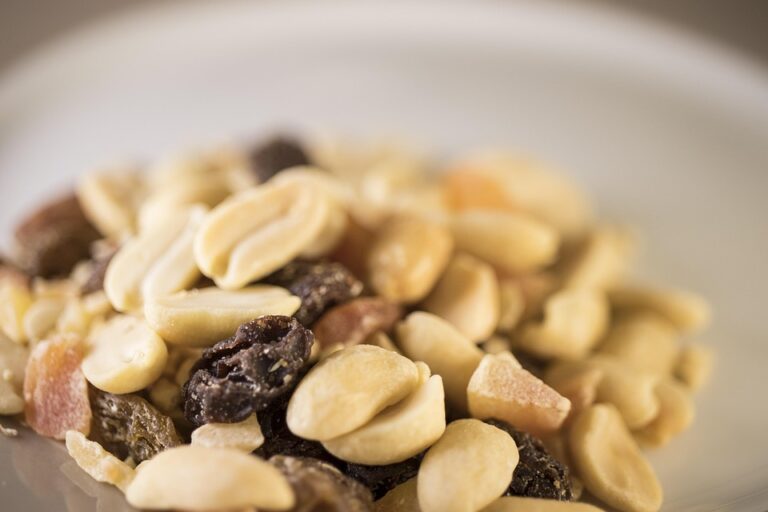Unearthing the Paleo Diet: A Comprehensive Guide to Eating Like Our Ancestors
Introduction to the Paleo Diet
The Paleo Diet, often lauded for its simplicity and focus on whole foods, has gained popularity among health enthusiasts seeking to improve their diet through a return to ancestral eating habits. Incorporating foods that would have been available in the Paleolithic era, this diet encourages individuals to consume meat, fish, fruits, vegetables, nuts, and seeds while avoiding processed foods, grains, and dairy products. In this comprehensive guide, we’ll explore the benefits, challenges, and practical tips for adopting the Paleo Diet, revealing how you can incorporate these principles into your daily life.
The Basics of the Paleo Diet
What Is the Paleo Diet?
The essence of the Paleo Diet is to mimic the eating patterns of our prehistoric ancestors. The idea is that our bodies are genetically programmed to thrive on the foods that were available during the Paleolithic era, which spanned from approximately 2.5 million years ago to about 10,000 years ago. During this vast expanse of time, early humans primarily consumed whole foods that were hunted or gathered, leading to a diet rich in nutrients and devoid of modern additives.
Key Food Groups of the Paleo Diet
- Meat and Fish: Grass-fed beef, free-range chicken, wild-caught fish.
- Fruits and Vegetables: Leafy greens, berries, sweet potatoes, etc.
- Nuts and Seeds: Almonds, walnuts, chia seeds, etc.
- Healthy Fats: Avocados, coconut oil, olive oil, etc.
- Herbs and Spices: Basil, rosemary, turmeric, to enhance flavor without additives.
Foods to Avoid
- Processed foods and sugars
- Grains (wheat, rice, corn)
- Legumes (beans, lentils)
- Dairy products
- Refined oils and additives
Benefits of the Paleo Diet
Adopting the Paleo Diet can lead to numerous health benefits. According to a 2021 study published in Nutrition Journal, individuals following the Paleo Diet reported significant reductions in body mass index (BMI), waist circumference, and cholesterol levels. In fact, a recent survey indicated that 43% of participants experienced sustained weight loss over a period of six months.
Weight Management and Overall Health
Research indicates that following a Paleo Diet can contribute to effective weight management. Because this diet emphasizes whole, unprocessed foods, it encourages a higher intake of proteins and healthy fats, both of which can increase satiety and reduce cravings.
In a manner analogous to how a vehicle performs better with high-quality fuel, our bodies similarly respond to better food choices. High-nutrient foods can optimize energy levels and overall health.
Challenges of the Paleo Diet
Despite its many benefits, transitioning to the Paleo Diet can be challenging. Here are some common hurdles individuals face:
- Social Situations: Dining out or attending social gatherings may require navigational skills to avoid non-Paleo options.
- Cost: Grass-fed meats and organic produce can add to grocery bills.
- Meal Preparation: Preparing meals from scratch may require additional time and commitment.
Practical Tips for Transitioning to the Paleo Diet
Transitioning to this way of eating doesn’t need to feel overwhelming. Here are some practical tips to help ease the shift:
- Start Gradually: Begin by eliminating one food group at a time to make the transition smoother.
- Plan Your Meals: Craft a weekly meal plan to avoid last-minute processed food purchases.
- Experiment with Recipes: Utilize online resources and cookbooks to discover new ways to prepare Paleo-friendly meals.
- Focus on Quality: When choosing meats or produce, opt for high-quality, organic sources where possible.
A Closer Look: Real-Life Success Stories
Numerous real-life examples underscore the effectiveness of the Paleo Diet. One inspiring story is of a 40-year-old woman who lost over 25 pounds in three months by adhering to Paleo principles. She reported feeling more energetic and healthier than she had for years.
Conclusion and Additional Resources
Embarking on the journey to adapt to the Paleo Diet can be both rewarding and transformative. By prioritizing whole foods and adopting the eating habits of our ancestors, you may experience significant improvements in overall health and well-being.
For further insights, check out these related articles on buzzo.live:
- How to Meal Prep Paleo: A Step-by-Step Guide
- Top 10 Paleo-friendly Snack Ideas for Delicious Curbside Cravings
For external resources, consider visiting the Paleo Foundation and the Cleveland Clinic for in-depth discussions surrounding the Paleo Diet and its health benefits.
Disclaimer
The content provided in this article is for informational purposes only and does not constitute professional advice. Buzzo.live is not responsible for any actions taken based on the information provided. Always consult a healthcare professional before making significant changes to your diet.
Image Suggestions:
-
Image 1: A vibrant assortment of Paleo food staples.
Alt text: Paleo Diet ingredients including fruits, vegetables, and meats.
- Image 2: A person preparing a Paleo meal in a kitchen.
Alt text: Preparing delicious Paleo Diet meals at home.


